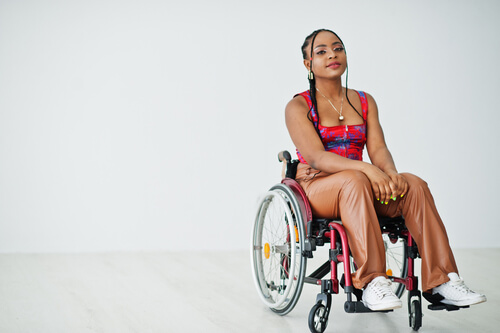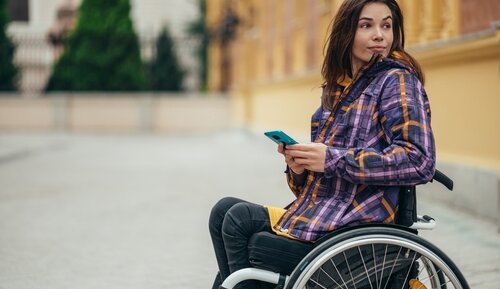
Page contents
- There are two components to PIP
- What are the PIP rates for 2025?
- What are the success rates for PIP?
- How long does it take for a decision to be made after the assessment?
- What are the top 5 medical conditions that qualify for PIP?
- Psychiatric disorders
- Musculoskeletal disease (general)
- Musculoskeletal conditions (regional)
- Neurological disorders
- Respiratory diseases
- Planned changes to PIP
- Help and support
Page contents
- There are two components to PIP
- What are the PIP rates for 2025?
- What are the success rates for PIP?
- How long does it take for a decision to be made after the assessment?
- What are the top 5 medical conditions that qualify for PIP?
- Psychiatric disorders
- Musculoskeletal disease (general)
- Musculoskeletal conditions (regional)
- Neurological disorders
- Respiratory diseases
- Planned changes to PIP
- Help and support
Personal Independence Payment, also known as PIP, is a benefit available to people who have a long-term health condition or disability. The benefit is intended to help cover the extra costs people can face due to the impact of their condition.
There are two components to PIP
- Daily Living component
- Mobility component
If you are eligible for Personal Independence Payment, how much you receive will be based on which component is most relevant to you and your needs.
The Daily Living component is aimed at people who require additional assistance in everyday life such as with eating and drinking, washing and other personal tasks and communicating with others.
The Mobility component is based on providing assistance to those who find it difficult to get out and about due to their condition. This could be because they need physical help when outside of their home or require assistance with planning a trip, for example.
What are the PIP rates for 2025?
Disability benefits such as PIP and Carer’s Allowance rose by 1.7% for the financial year 2025/26.
The increase makes PIP rates for 2025/26:
Daily Living
- Standard: £73.90 per week. £295.60 per month.
- Enhanced: £110.40 per week. £441.60 per month
Mobility
- Standard: £29.20 per week. £116.80 per month.
- Enhanced: £77.05 per week. £308.20 per month.
What are the success rates for PIP?
In January 2024 , there were around 3.3 million people claiming PIP across England and Wales and 220,000 in Scotland. These seem to be a high number but bear in mind that a large number of PIP claims are not successful.
In the last five years (2019-2024), only 41% of new claims for PIP have been successful. This means that over half of new applications during this period were rejected.
How long does it take for a decision to be made after the assessment?
New claims take an average of 20 weeks for the DWP (Department of Work and Pensions) to process. However reviews of existing claims can take a lot longer.
What are the top 5 medical conditions that qualify for PIP?
PIP is currently available to people with a wide range of health conditions and disabilities. Whilst this is advantageous to many people it can also mean that it can be difficult to determine whether or not you could be eligible for the additional financial assistance being offered.
The Department of Working Pensions (DWP) highlights the top 5 recorded conditions that people claim PIP for. This can help people better determine their chances of eligibility before they make an application.
Psychiatric disorders
With 38% of people receiving PIP having a psychiatric disorder, it is the most common condition people receiving PIP claim for. Psychiatric disorders are mental health conditions that can affect how a person thinks and feels about themselves and/or the world around them. They can be completely debilitating and often manifest in a range of different ways.
There are many conditions that fall under the umbrella of a psychiatric disorder.
Examples of psychiatric disorders
- Anxiety
- Panic attacks
- Post-traumatic stress disorder (PTSD)
- Depression
- Bipolar disease
- Eating disorders
- Obsessive compulsive disorder (OCD)
- Addictions (for example drug or alcohol misuse)
Musculoskeletal disease (general)
Musculoskeletal diseases affect the connective tissues within the body, including bones, muscles and tissues as well as tendons and ligaments. People with the condition can experience anything from mild aches and pains to severe and debilitating pain. They may also experience flare ups where their condition worsens during certain periods of time.
A general musculoskeletal disease is when the condition affects the whole body or large parts of it.
Examples of general musculoskeletal conditions
- Arthritis
- Osteoarthritis
- Fibromyalgia
- Carpal tunnel syndrome
- Tendonitis
Musculoskeletal conditions (regional)
A regional musculoskeletal condition affects a specific part of the body and is usually isolated to that area.
Parts of your body which can be affected by regional musculoskeletal conditions:
- Back
- Shoulders
- Neck
- Hips
- Legs
- Feet
Like with general musculoskeletal disease, people often experience regional musculoskeletal disease differently, with varying symptoms and severities which can get better or worse at different points of time.
Over a million adults in the UK are now receiving support through Personal Independence Payment (PIP) for more than 85 musculoskeletal conditions, according to the DWP.
Neurological disorders
Neurological disorders affect the brain and the nervous system. One of the most commonly known neurological disorders is dementia. However there are many other examples which could qualify a person for PIP.
Examples of neurological disorders
- Motor neurone disease
- Multiple sclerosis (MS)
- Epilepsy
- Parkinson’s disease
- Alzheimer’s
- Narcolepsy
Like the other conditions covered, neurological conditions vary in terms of severity and how a person experiences the disorder, this will affect the level of support they need in their day-to-day life.
Respiratory diseases
A respiratory disease is a condition that affects the system of organs and tissues that help us to breathe. Common symptoms include a tight chest, breathlessness, coughing and wheezing.
Commonly known respiratory diseases, such as bronchitis or the flu, are short term conditions that will improve within weeks or months. However chronic respiratory conditions can be lifelong with varying symptoms and severities.
Examples of chronic respiratory conditions
- Asthma
- Cystic Fibrosis
- Emphysema
- Chronic bronchitis
Whilst the conditions listed above are those most commonly claimed under for PIP, they each differ in terms of severity and different people will require differing levels of help and support.
This means that you may not be automatically eligible for PIP if you have one or more of the conditions listed above as each application is assessed on an individual basis.
If your health condition isn’t listed or doesn’t fit into the categories above, it doesn’t mean you won’t be eligible for PIP.
Examples of lesser known qualifying conditions
- Skin conditions
- Eye problems
- Migraines
- Tourette’s syndrome
- Writer’s cramp
Planned changes to PIP
Liz Kendall, the Secretary of State for Work and Pensions, proposed a whole raft of welfare reforms on 18 March 2025.
- She promised to ditch reassessments for disabled people who will never be able to work and for people with lifelong conditions.
- The eligibility criteria for PIP is being reduced so it will be harder for people to successfully claim the benefit. People will have to show they have greater difficulty with daily activities such as washing, eating and dressing. They will need a minimum score of four on at least one of the daily living activities so they can be eligible for the daily living element of PIP. It is thought the change will impact around a million people.
- Eligibility for mobility needs will be unaffected by the changes.
- PIP assessments will be recorded.
- There will be an increase in the number of face to face assessments.
- The welfare reforms will come into effect in November 2026.
The government has said it has to take action as since the pandemic, the number of working-age people starting to receive PIP each month has more than doubled from 15,300 to 35,100 a month. The number of young people (16-24) receiving PIP per month has tripled from 2,967 to 7,857 a month.
Help and support
You can find more information about Personal Independence Payment in our article.
PIP has been replaced with the Adult Disability Payment in Scotland.


